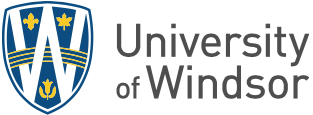We seek to better understand the organization, management, promotion, and associated mental and physical components of sport.
Determining the biomechanical response of tissues of the human body to impacts and the mechanisms associated with impact-induced injury.
Our researchers advance areas related to health by investigating how the body responds to impact-induced injury (e.g., arresting a fall using outstretched hands, running and jumping, and tackling in football). The soft (fat, muscle, skin) and rigid (bone) tissues of the human body interact to protect the body from potentially injurious forces that are applied to the upper extremities, lower extremities, and the head. We utilize biomechanical instrumentation to document the motion of the soft tissues of body segments and thus, enhance the understanding of the role that soft tissues have in injury prevention. In addition, by establishing a method that enables soft and rigid tissue masses to be determined in living men and women across a range of ages using anthropometric measures, we have facilitated the development of biomechanical models with increased anatomical biofidelity. Our research has focused on such areas as 1) quantifying helmet kinematics of youth football players during head impacts, with the overall goal of improving impact-related health outcomes through helmet design and player training; and 2) quantifying drummers’ exposures to upper limb vibration while playing, with the goal of developing vibration exposure reduction strategies (e.g., specialized drum sticks, wraps, etc.) to minimize the risk of related injuries.
Enhancing sport performance.
Using theoretical and applied practices, we aim to understand the psychological and psychosocial influences contributing to sport behaviour. We conduct leading-edge research in the following areas; imagery, athlete leadership, body image, cohesion, psychological skills training for athletes with a disability, coaching, and team building.
Developing effective early identification and prevention strategies to reduce the prevalence and burden of playing-related musculoskeletal disorders (PRMDs) in drummers
Our researchers engage in activities that document the prevalence and patterns of PRMDs, investigate the playing-related and lifestyle characteristics that increase or minimize risk, and quantify physical exertion parameters during live performances. Playing the drums is a physically demanding task, and as with any other strenuous occupational or athletic endeavour, drummers may be at risk of sustaining PRMDs due to exposure to various injury risk factors (e.g., high forces and repetition, upper limb vibration, static and/or awkward postures, etc.). We also engage in popular and social media to raise drummers’ awareness of the importance of training their bodies for the demands of their profession.
Generating evidence-based knowledge that informs sport industry practices and enhances individual experiences with products, services, and programs.
The sport industry spans across several sectors, including recreation and sport participation, elite amateur sport, intercollegiate/interuniversity sport, and professional sport, among others. Our researchers contribute to better understanding sport consumer/spectator behaviours, marketing and sponsorship relations, motivations and experiences of sport participants, and strategic stakeholder involvement in sport. For example, our current research explores the motivation and commitment of sport participants as a result of early exposure to sport both as participants and spectators, the connections between and perceptions of sport and commerce at the Olympic Games, and consumer attitudes and perceptions towards various modes of sport media consumption. Understanding participation and consumer behaviours provides sport organizations with important insights into leveraging resources and creating an environment to promote life-long participation and/or organizational growth. Together, our research offers evidence-based insights that contribute to the sport experience, whether it be as a participant, consumer, or stakeholder.
Building the capacity of sport and recreation organizations
Our researchers contribute to a greater understanding of the capacity needs and assets of community sport and recreation organizations at the local, regional, provincial, national and international level. Community sport and recreation organizations occupy a unique position within the broader sport system as the central provider of local sport participation opportunities. Community sport organizations are also expanding the scope of their efforts to address social problems and develop social engagement opportunities in their communities. Together, this demonstrates the importance of understanding how these organizations build their capacity in order to deliver sport and support social change efforts at the community level. Our research has resulted in the development of a strategic model of capacity building, identification of key factors in (un)successful capacity building, and an examination of organizational readiness to build capacity. Our work has provided community sport organizations with a strategic approach to leveraging their assets and addressing areas of need in order to better fulfill their mandate of offering sport participation opportunities at the community level.









